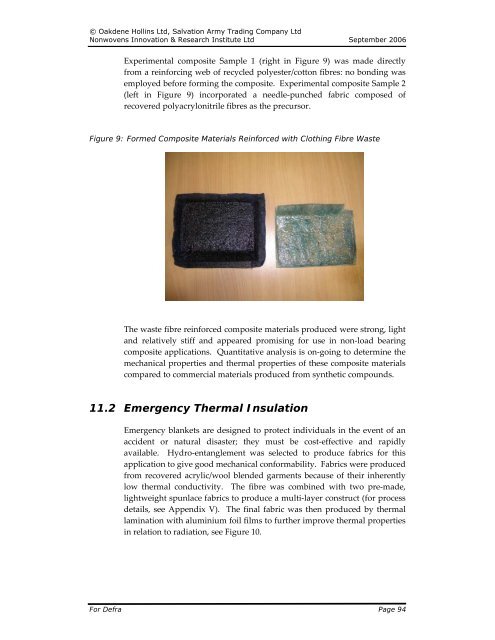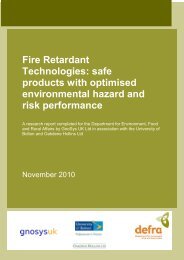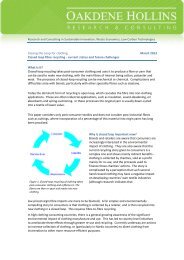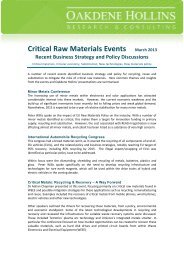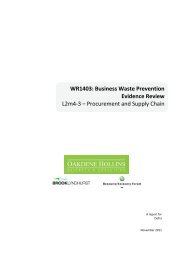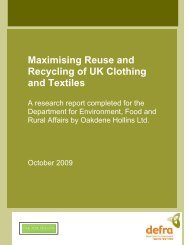Recycling of Low Grade Clothing Waste - Oakdene Hollins
Recycling of Low Grade Clothing Waste - Oakdene Hollins
Recycling of Low Grade Clothing Waste - Oakdene Hollins
You also want an ePaper? Increase the reach of your titles
YUMPU automatically turns print PDFs into web optimized ePapers that Google loves.
© <strong>Oakdene</strong> <strong>Hollins</strong> Ltd, Salvation Army Trading Company Ltd<br />
Nonwovens Innovation & Research Institute Ltd September 2006<br />
Experimental composite Sample 1 (right in Figure 9) was made directly<br />
from a reinforcing web <strong>of</strong> recycled polyester/cotton fibres: no bonding was<br />
employed before forming the composite. Experimental composite Sample 2<br />
(left in Figure 9) incorporated a needle‐punched fabric composed <strong>of</strong><br />
recovered polyacrylonitrile fibres as the precursor.<br />
Figure 9: Formed Composite Materials Reinforced with <strong>Clothing</strong> Fibre <strong>Waste</strong><br />
The waste fibre reinforced composite materials produced were strong, light<br />
and relatively stiff and appeared promising for use in non‐load bearing<br />
composite applications. Quantitative analysis is on‐going to determine the<br />
mechanical properties and thermal properties <strong>of</strong> these composite materials<br />
compared to commercial materials produced from synthetic compounds.<br />
11.2 Emergency Thermal Insulation<br />
Emergency blankets are designed to protect individuals in the event <strong>of</strong> an<br />
accident or natural disaster; they must be cost‐effective and rapidly<br />
available. Hydro‐entanglement was selected to produce fabrics for this<br />
application to give good mechanical conformability. Fabrics were produced<br />
from recovered acrylic/wool blended garments because <strong>of</strong> their inherently<br />
low thermal conductivity. The fibre was combined with two pre‐made,<br />
lightweight spunlace fabrics to produce a multi‐layer construct (for process<br />
details, see Appendix V). The final fabric was then produced by thermal<br />
lamination with aluminium foil films to further improve thermal properties<br />
in relation to radiation, see Figure 10.<br />
For Defra Page 94


